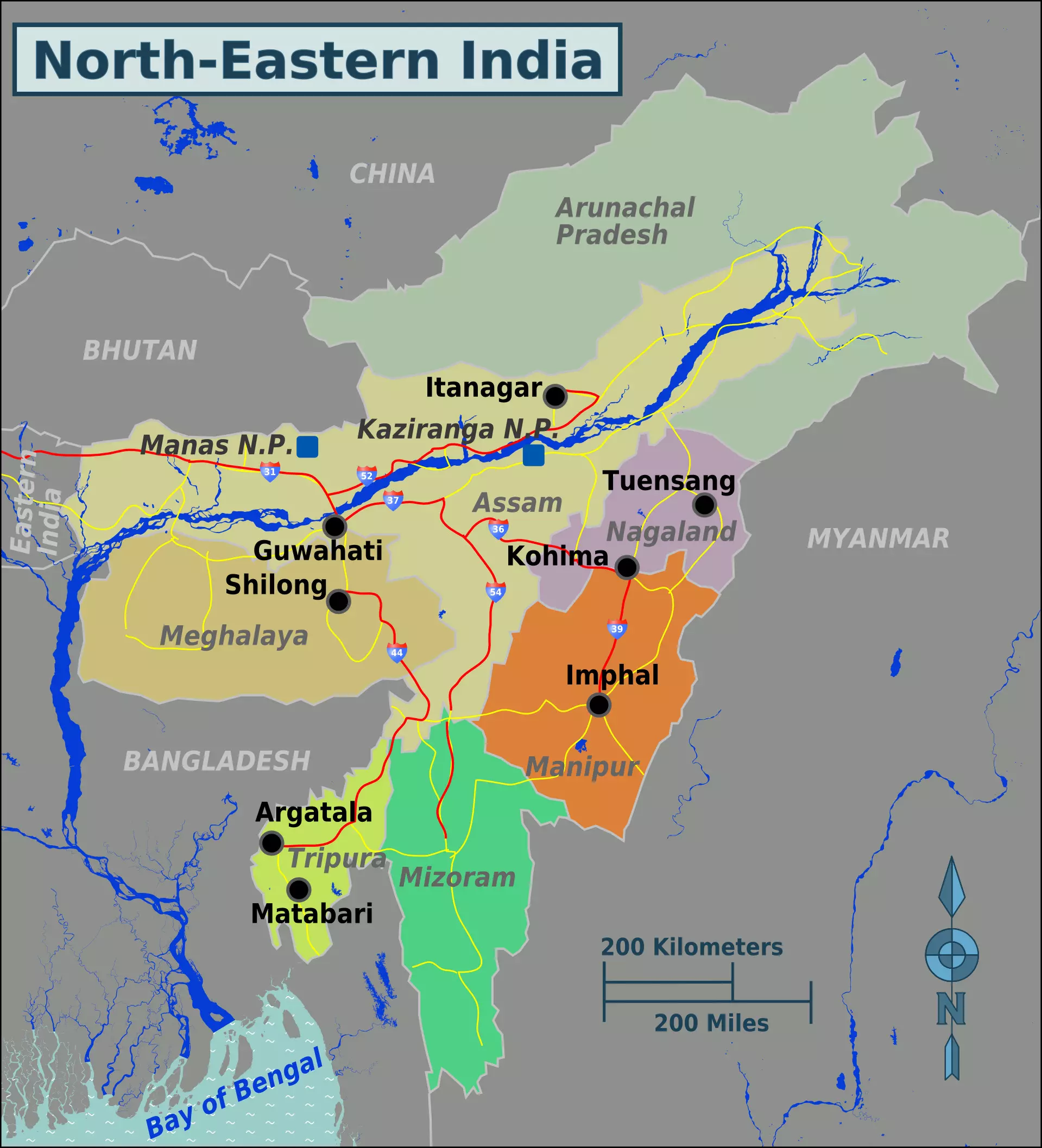Lost in the shuffle
A regional approach to development can help harness Northeast’s immense potential and revitalise it as a trade hub; write Pawan Sain & Akanksha Saini

The Northeast is a land of beautiful landscapes and a melting pot of communities, faiths, and cultures. However, it is often overlooked and under-explored by many Indians. Despite its location in the country's extreme east, it is still commonly referred to as the Northeast. One thinks that this may be due to its geographical location in other parts of India, or to the historical and cultural ties it shares with the surrounding region.
However, this is because we are still in the historical paradigm and look Northeast from the British government's perspective. The term Northeast is based on the fact that India until early 1900 had its capital in Calcutta.
The British colonial government's desire to expand its markets and consolidate its power in Northeast India led to the capture of new areas of land, including the fertile and resource-rich Brahmaputra valley. To support the export of Assam tea, a railway line was built to connect the region to the Chittagong Port in 1895. This economic activity resulted in a higher per capita income in Assam compared to the rest of India at the time of its independence.
The Northeast begins where ASEAN ends. Both of these areas share a natural affinity, magnoliid features, cultural habits, food and clothing patterns, and other similarities with the rest of India. They are historically linked by old trade routes. Northeast India serves as a "physical and cultural link" between India, Southeast Asia, and East Asia.
The narrative of the Northeast is that of neglect. It has remained outside of the mainstream consciousness of India's heartland. Burma and India were separated in 1937. This relatively easy partition led to the assumption that the partition in 1947 would also be easy. But things didn't go as planned, and the entire axis of the North East's economic activities came to a halt when the Chittagong post fell into the hands of East Pakistan. The free movement of people, trade, and settlement were all disrupted, and the collapse began.
Following independence, major routes were tightened, effectively strangulating the entire North East area. The Siliguri corridor, also known as the chicken's neck, became the only point of connectivity with the rest of India by providing a narrow strip of 22 km of corridor space.
Rebellions and secession movements that began with the feeling to share resources quickly became prevalent in this region. As economic resources dwindled, more secession movements arose to protect their share. Until 2001, India's strategy and response mechanism were very defensive, with the role limited to dealing with law-and-order issues in the region. For the first time in 2002, the thought process in policy-making and approach were changed and the focus was shifted to the development of the Northeast area. A separate department, DONER, was created during the Vajpayee government. This was a major paradigm shift to boost Northeast's development, where the need was felt to pump in money.
Under the leadership of Prime Minister Narendra Modi, the Look East policy was elevated to the 'Act East Policy'. The Look East policy only addressed ASEAN and its economic integration but the 'Act East Policy' is more comprehensive. It includes not only ASEAN members and their economic integration, but also East Asian countries and security cooperation.
Several infrastructure projects, such as highways, airports, and railway stations, are currently being built in the Northeast region of India. These projects aim to connect all of the state capitals in the area. This development presents an opportunity to recreate the region's historical connections and promote flexible travel and trade.
India needs to take lead from China and step up its efforts on the infrastructural front. China has used Yunnan Province's extremely poor land-locked multilinguistic, multitribal, multi-ethnic, identical geographical area as a gateway to South East Asian Countries. Kunming International Airport is a multi-modal transportation hub that connects the region by air, rail, and highway, revitalising Kunming's historic role as a gateway between China and the rest of the world.
The need of the hour is to develop Guwahati as the Kunming of India, which will help the region to emerge as a major trade hub for South East Asia. Furthermore, the national agencies need to build a diverse range of mega projects in this area which will help in the generation of employment opportunities, and move away from incremental thinking to an exponential mindset.
The Brahmaputra and other tributaries can be used to generate electricity, and it can also be used to develop waterways to other places including Bangladesh, which will be the most cost-effective mode of transportation. The Sagarmala project can also kickstart several mini-projects in the Brahmaputra valley. Due to its subtropical climate, the region is rich in natural vegetation and precious metals. As a result, the location is ideal for establishing a manufacturing unit to export raw materials. Regional transportation needs to be developed to access South East Asian countries. The trilateral highway will aid in the reconstruction of historical trade routes.
There are many untapped opportunities in the Northeast region of India, and a regional approach to development is necessary to take advantage of them. The history of the region suggests that it is important to prioritise both openness and security to foster economic growth. It is time to revitalise the Northeast and return it to its former status as a hub of economic activity.
Pawan Sain is Joint Secretary, EAC-PM; and Akanksha Saini is Young Professional, EAC-PM. Views expressed are personal



